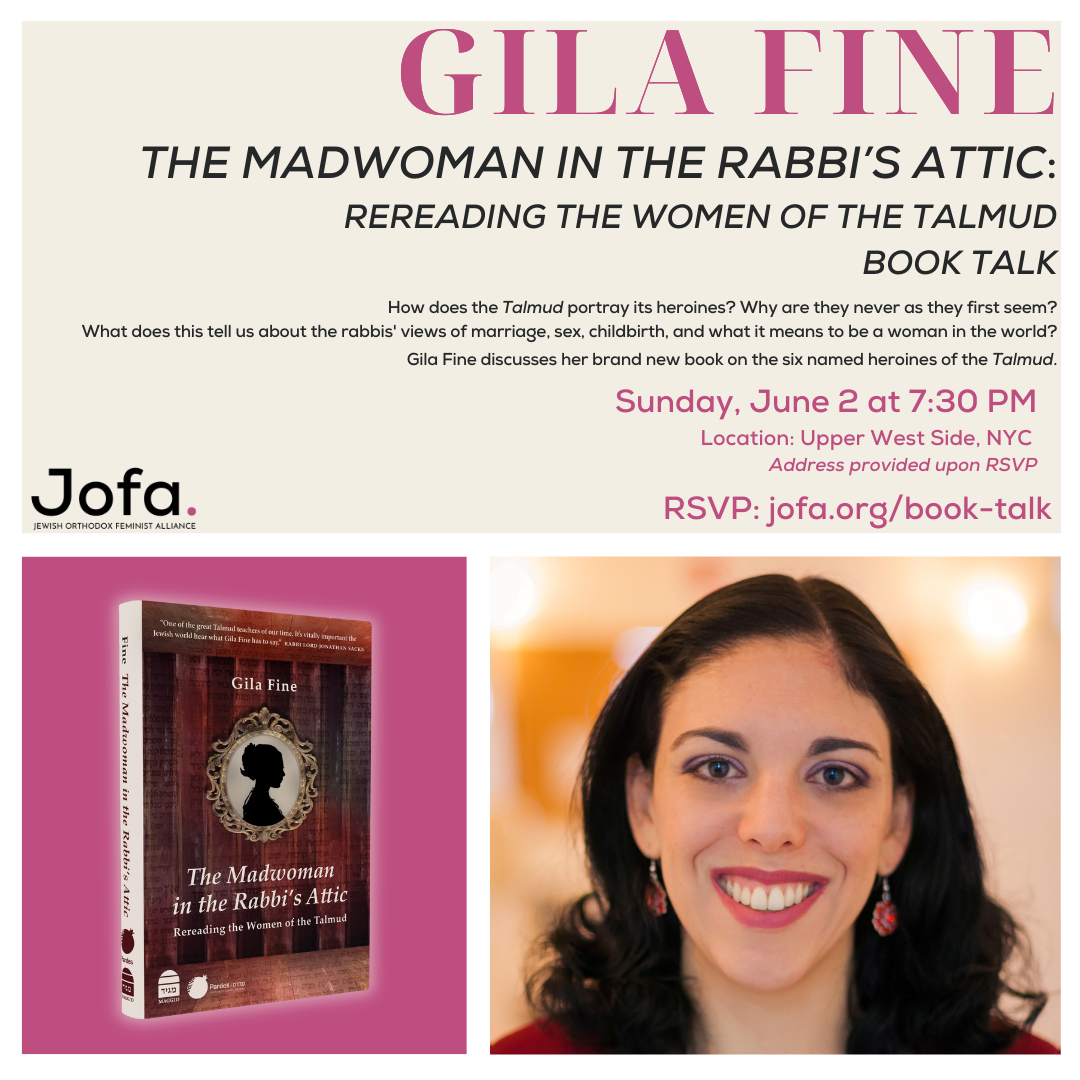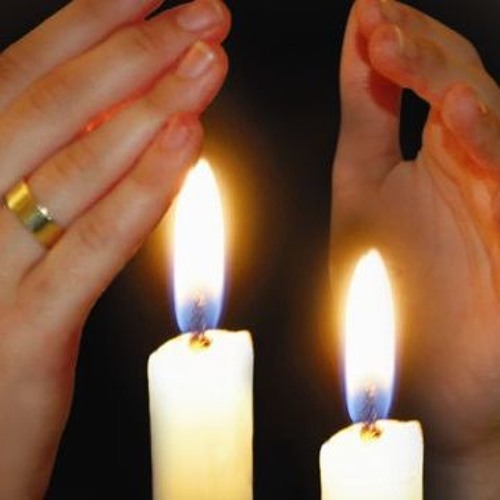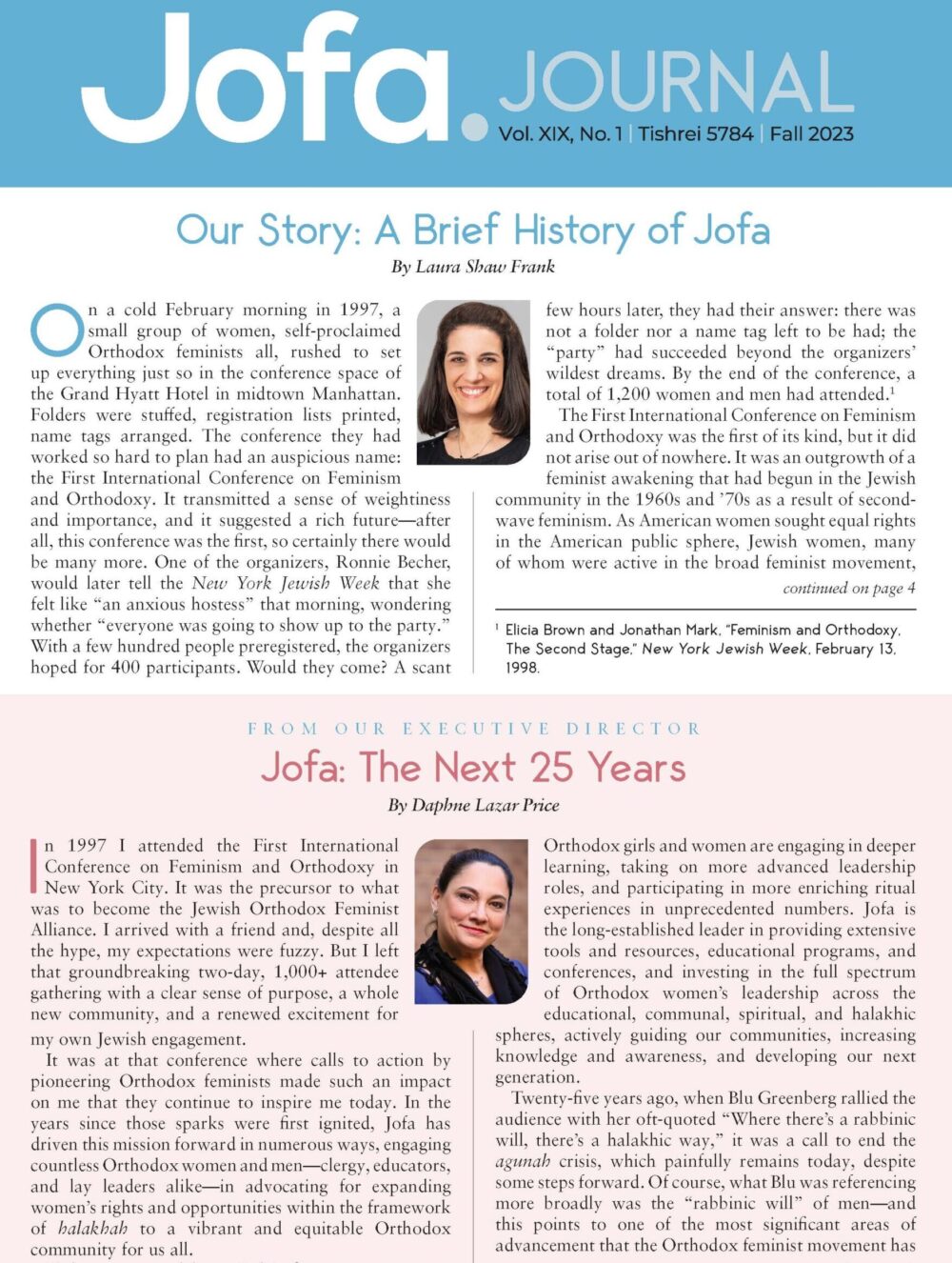By Rabbi Daniel Sperber, Afterword by Rabbanit Dr. Michal Tikochinsky
Maharat/Urim Publishers, 2020, $27.95
Review by Debbie Weissman
In the Bible, there are many important female figures—although many fewer than the male figures—occupying a variety of roles far beyond the traditional domestic ones, including judge, queen, warrior, and “wise woman.” If Proverbs 31:10–31—the Eishet Ḥayil–can be taken as a description of the ideal wife, she is far from a meek homebody. If anything, the problem is that she is expected to be a kind of “superwoman,” active in agriculture and commerce as well as running a household and family. It seems unlikely that these biblical texts would include such descriptions unless they were anchored, at least to some extent, in the reality of their times. The women mentioned in the Hebrew Bible—from Eve and the matriarchs to Queen Esther—are proactive, pivotal figures whose actions move the plot along, changing the course of history. One significant omission, though, is that even though women assumed many roles of leadership in society, these did not include ritual–cultic leadership. There were no priestesses in the ancient Israelite religion.
Several scholars have suggested that their absence may have been a kind of reaction against ancient Canaanite fertility cults, in which goddesses and priestesses played central roles. But this absence of women in cultic roles may explain, at least in part, why, when the Second Temple was destroyed and rabbis replaced priests, only men were rabbis. Those rabbis improved the legal status of Jewish women in matters relating to, for example, marriage, divorce, and inheritance law, but contributed to the decline of the status of Jewish women socially. For close to two millennia, women were excluded from the centers of power and authority—the beit midrash and the beit din. Much of the exclusion can be traced to the exemption of women from the mitzvah of learning Torah. When women are exempt from learning Torah, the venues of Torah—the batei midrash—become male domains.
Since the nineteenth century in Germany, and more markedly within the past forty or so years, Jewish women have begun to study Torah in a serious way. In the 1970s and 1980s, important institutions for women’s Torah learning were established, both in New York and in Jerusalem. During those years, the non-Orthodox streams of Judaism began to ordain women for the rabbinate. Even if they lacked prophetic talents, one might have envisaged that, sooner or later, some Orthodox women would be interested in becoming rabbis. Two Orthodox feminist organizations (not mentioned in this volume) contributed to the interest in this new development: JOFA in 1997 and Kolech, its Israeli parallel, in 1998.
As Rabbi Professor Daniel Sperber chronicles—especially in one long footnote—by the early twenty-first century, some Orthodox women had received private ordination. And the end of the first decade of this century saw the founding of the first institution for ordaining women, Yeshivat Maharat, in New York City.
For a while, there was much concern and discussion about nomenclature; hence, the title of this volume. But the topic quickly became passé and is given short shrift in the text. What is at stake is what is in the subtitle—“Women with Leadership Authority.” It appears that people who object to female rabbis object as well to women sitting on synagogue boards.
Early in the book, Rabbi Sperber writes, “I am not a feminist, but rather a halachist.” Exhibiting both great breadth and depth in the sources he musters, Sperber makes a strong case for qualified, learned, and pious women’s ability to lead their communities, including in rabbinic roles. His use of the concept of human dignity, kevod ha’beriyot, lies at the basis of his work with partnership minyanim, both in Israel and in the diaspora. In the appendices to this volume, he brings an essay in English and in Hebrew by his late father, Rabbi Dr. Samuel Sperber (1906–84), who was himself both a talmid ḥakham and a law professor. We can see that the son is indeed following in the footsteps of his father.
A Prodigious Torah Scholar
Rabbi Daniel Sperber is a prodigious Torah scholar as well as a man of wide general knowledge. He is deeply committed to the cause of interreligious dialogue, serving as an advisor to the Israeli Chief Rabbinate in its work with both Western and Eastern faiths. He is also a sensitive and humble person who shows great respect for those with whom he disagrees. His reply to Rabbi Hershel Schachter of Yeshiva University is a model of humility and civil discourse. Sperber not only espouses kevod ha’beriyot as a concept in his decision-making; he also actively practices it and models it.
Other than in the appendices, Rabbi Sperber’s contribution to this book begins on page 9 and ends with page 106, with pages 79–85 being statements by Rabbi Schachter, the Rabbinical Council of America, and the leadership council of Agudat Yisrael. It is not entirely clear why the latter organization is brought in, as it hardly figures in the current debate within the Modern Orthodox community. The next major section of the book is the so-called Afterword by Rabbanit Dr. Michal Tikochinsky. This piece is an essay that raises an important question: Will female rabbis bring a different or new perspective to the halakhah? The examples given are largely from hilkhot mikvah and niddah. But her approach is intriguing and, hopefully, will be developed further in another volume.
There follow five appendices that present further objections and further rebuttals, including a piece by Rabbi Herzl Hefter, who makes a bold comparison between the Orthodox Union’s statement against female clergy and a pre–Civil War sermon by an American rabbi defending slavery as an institution. Rabbi Hefter insists that he is comparing only the methods of argumentation, not the situations themselves. Four additional essays follow, by other rabbis and by Rabbi Sperber himself, on the concept of tradition in halakhic decision-making, and by his father, in both English and Hebrew.
This is an important book that is well worth reading, but it could have been a good deal stronger. First, the responsibility lies with the editing (or lack thereof); the book is organized in a confusing and not user-friendly way. Second, the decision as to what to translate and what not is also not transparent. For example, “shochtot” is translated; “lomdus” isn’t. We might assume that people who are familiar with the concept of lomdus would also know about shochtot (ignoring, of course, the differences in Hebrew pronunciation that aren’t consistent in the volume).
Two final comments: one of praise and the other, a quibble. The praise is for the inclusion of Rabbis Ethan Tucker and David Golinkin, neither of whom is identified with the Orthodox community, in this volume—the former, in a five-page piece, and the latter, in a footnote. They are both recognized talmidei ḥakhamim but aren’t usually quoted in Orthodox circles; their inclusion reflects Rabbi Sperber’s open approach.
The quibble regards the final page, “About the Authors,” which presents descriptions of Rabbi Sperber and Rabbanit Tukochinsky. She is identified, among many other facets of her life, with her husband’s name and their seven children. Rabbi Sperber’s bio makes no mention of his wife or their ten children—a double standard, it would seem.
Dr. Debbie Weissman made aliyah in 1972. She has written about her work in Jewish education, religious feminism, and interreligious dialogue in Memoirs of a Hopeful Pessimist, published by Urim/Ktav.

LAST CHANCE: RSVP for Book Talk with Gila Fine, New York City, Sunday Evening, June 2
On Sunday, June 2, at 7:30PM, on the Upper West Side of Manhattan, Gila Fine will discuss her brand new book, “The Madwoman in the








